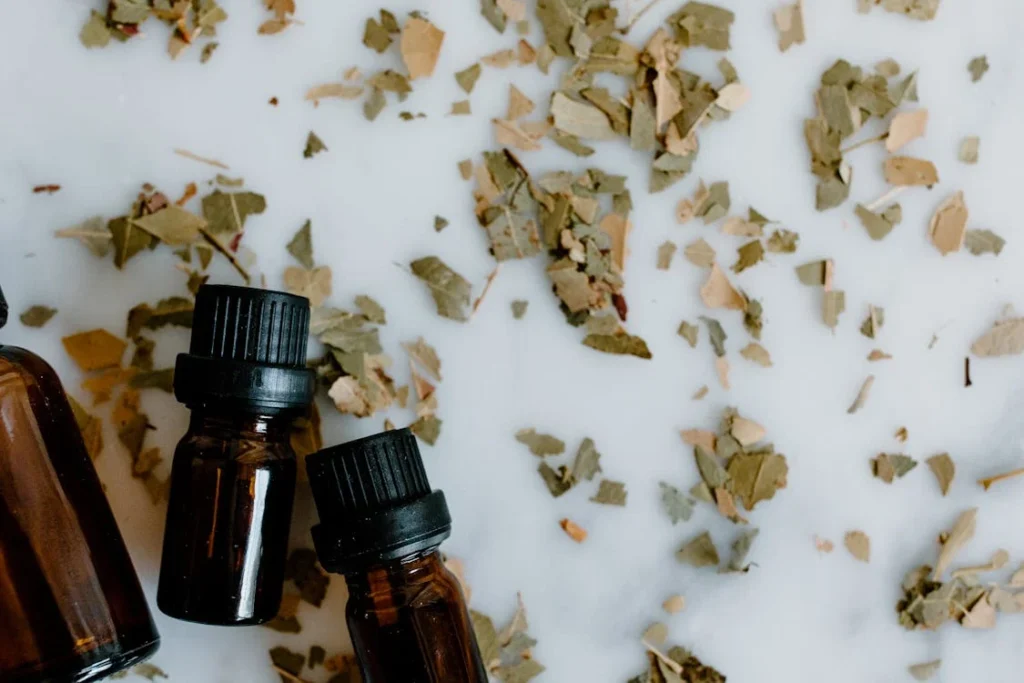Essential oils, the concentrated extracts derived from plants, have been used for centuries in natural and holistic health practices. With growing interest in non-toxic, nature-based solutions for health and wellness, essential oils have earned a well-deserved place in modern self-care routines. From promoting relaxation to supporting the immune system, these powerful plant essences offer a wide range of potential benefits.
In this article, we take a deep dive into the top 10 health benefits of essential oils and explore how to safely and effectively use them.
1. Stress Relief and Emotional Balance
Aromatherapy using essential oils like lavender, bergamot, and chamomile has been shown to reduce cortisol levels and promote a sense of calm. Inhaling these scents stimulates the limbic system, the brain region responsible for emotions and memory. Regular use may ease symptoms of anxiety, depression, and emotional burnout.
How to Use: Add a few drops to a diffuser, or inhale directly from the bottle during moments of stress. You can also mix with a carrier oil and apply to pulse points.
2. Improved Sleep Quality
Lavender and cedarwood essential oils are frequently used to support healthy sleep cycles. These oils work by calming the nervous system, reducing nighttime awakenings, and increasing deep sleep.
How to Use: Diffuse in the bedroom 30 minutes before bedtime, or add a few drops to your pillowcase or sleep mask.
3. Enhanced Cognitive Function
Rosemary, peppermint, and lemon oils are associated with improved memory, focus, and alertness. Some research suggests these oils may stimulate the hippocampus and support neurotransmitter function.
How to Use: Inhale via a diffuser while working or studying. Apply diluted oil to the temples or back of the neck.
4. Immune System Support
Oils like tea tree, eucalyptus, and oregano are known for their antibacterial, antiviral, and antifungal properties. These oils can help strengthen the immune response and reduce susceptibility to seasonal illnesses.
How to Use: Use in a steam inhalation, or mix with a carrier oil and apply to the chest and feet.
5. Respiratory Relief
Eucalyptus and peppermint essential oils are often used to relieve congestion and support clear breathing. Their active compounds help open the airways and thin mucus.
How to Use: Inhale with steam, add to a chest rub, or diffuse in rooms where you’re spending time.
6. Pain and Inflammation Reduction
Essential oils like ginger, frankincense, and helichrysum have natural anti-inflammatory and analgesic properties. They may help reduce joint and muscle pain, making them ideal for use in massage.
How to Use: Dilute and massage into sore muscles, or add to a warm bath with Epsom salts.
7. Digestive Health
Peppermint and ginger oils have been used to reduce bloating, gas, and nausea. Their soothing effects on the digestive tract make them a popular choice for natural relief.
How to Use: Apply diluted oil to the abdomen in circular motions. In some cases, a single drop of food-grade oil may be taken in water under the guidance of a healthcare provider.
8. Hormonal Balance
Clary sage and geranium essential oils are thought to support the endocrine system and reduce symptoms associated with hormonal imbalances, such as PMS and menopause.
How to Use: Massage diluted oil onto the lower abdomen, or diffuse regularly during the menstrual cycle.
9. Skin Health and Healing
Tea tree, lavender, and rose essential oils can help manage acne, reduce redness, and promote wound healing. They are also used in anti-aging and hydrating skincare formulations.
How to Use: Dilute with a carrier oil like jojoba or almond oil and apply to the skin, or add to natural face masks and cleansers.
10. Household Detox and Cleaning
Lemon, orange, and thyme essential oils have antimicrobial properties that make them excellent for green cleaning. They can disinfect surfaces, freshen the air, and eliminate odors without harsh chemicals.
How to Use: Add to DIY cleaning sprays, dish soap, or use in a diffuser to purify the air.
Final Thoughts
Essential oils can be a powerful ally in your journey toward holistic wellness, offering support for your mind, body, and environment. As with any natural remedy, it’s essential to use them safely—always dilute appropriately, patch-test new oils, and consult with a healthcare professional if you’re pregnant, nursing, or managing a health condition.
With a little guidance and consistency, these aromatic extracts can transform your wellness routine naturally and effectively.
How to Use Essential Oils Safely
- Aromatherapy Diffusion: Add 5–10 drops to a diffuser to spread the scent in your environment.
- Topical Application: Dilute with a carrier oil (like coconut or jojoba) before applying to the skin.
- Bath Soaks: Add a few drops to Epsom salts for a calming bath.
- Massage Oil: Blend with a carrier oil and massage into tense areas.
⚠️ Safety Tip: Never ingest essential oils without medical supervision. Always patch test before applying to skin.
Best Practices for Beginners
- Start with a few versatile oils like lavender, peppermint, and tea tree.
- Buy from reputable brands that offer 100% pure, therapeutic-grade oils.
- Store in dark glass bottles in a cool, dry place to preserve potency.
